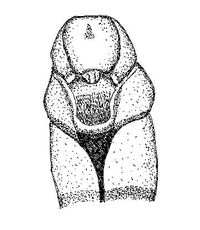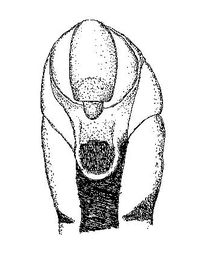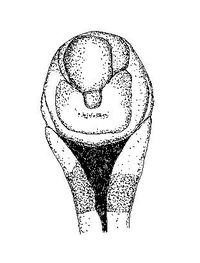
Introduction
Leopoldius are yellow on black Conopids,
which are easily mistaken for a Conops on first
sight. Their snout is short, however, and L. signatus
appears in September when Conops is gone. Adults
visit flowes. The key follows Kröber (1925) and De Bree, Smit and
Mortelmans (2014).
1.b. Snout about as long as the head,
stiff by chitin; antennae: 3rd
segment dorsally with small bristles; coxae black; frons browhish
yellow with black markings. 10-14 mm. D. -> Leopoldius
(Abrachyglossum) capitatum Loew


2.a. Scutellum yellow; femora yellow or yellow with a black patch covering less than 1/3rd of the femur; front border of wing more or less hyaline. Female: theka yellow; at least coxa 1 yellow -> 3
2.b. Scutellum black; femora yellow with a large black patch or ring, dorsally covering 1/2 of the length or more (femora may be almost black); front border of wing strongly blackened; all coxae black; abdomen shining, with black hairs. Female: theka black, clearly protruding in side view. 10-11 mm. B, D, central Europe. -> Leopoldius calceatum Rondani


3.a. Frons with a broad yellow stripe from eye to eye, which is as yellow as the other yellow parts of the head, sharply bordered with the black parts. Only females can be identified. -> 4



4.a. Female: in ventral view, theca narrow, about half the abdominal width (figure above) -> 5
4.b. Female: in ventral view, theca as wide as the abdomen, with only a few bristles in the middle (figure above), compare to L. signatus as the only other Leopoldius with wide, yellow theca). Male and female (approximate): Frons: yellow stripe smaller than black stripe, front border of black stripe straight. 12-13 mm. NL, B, D. -> Leopoldius coronatus Rondani



Clements, D. K. 2000. Leopoldius macrus (Séguy): a synonym of L. brevirostris (Germar) (Dipt., Conopidae).Entomologist's Monthly Magazine 136: 87-89.
Last updated 15.2.2004